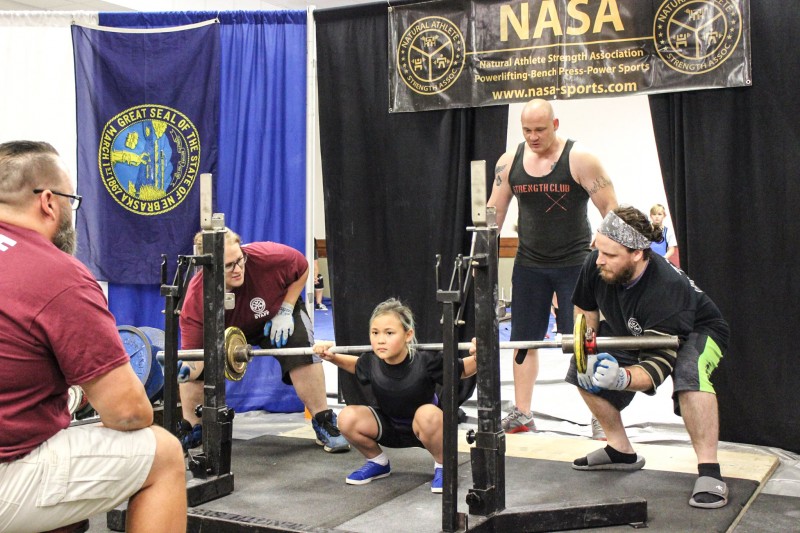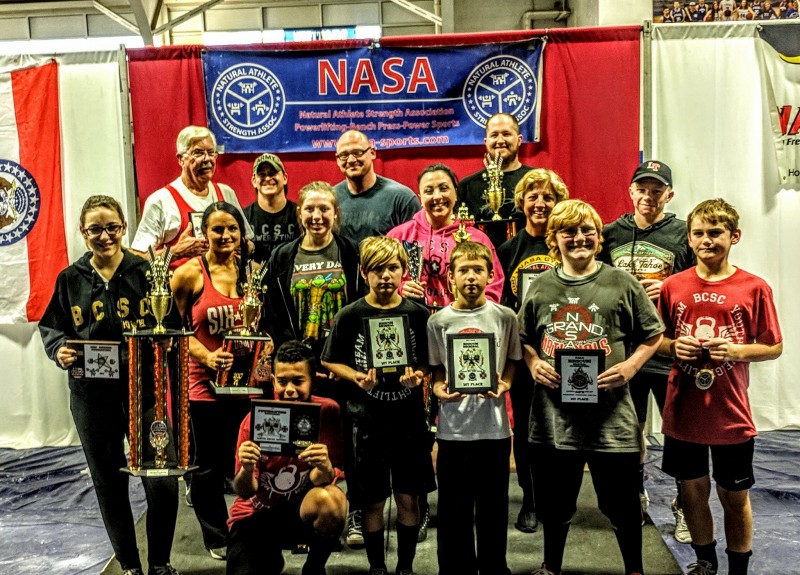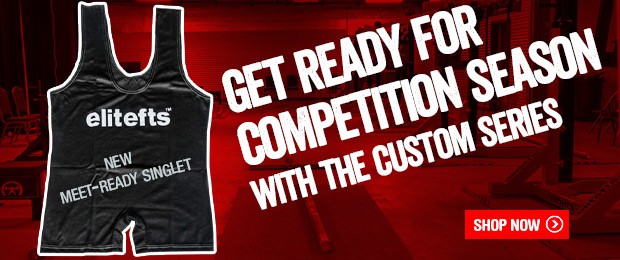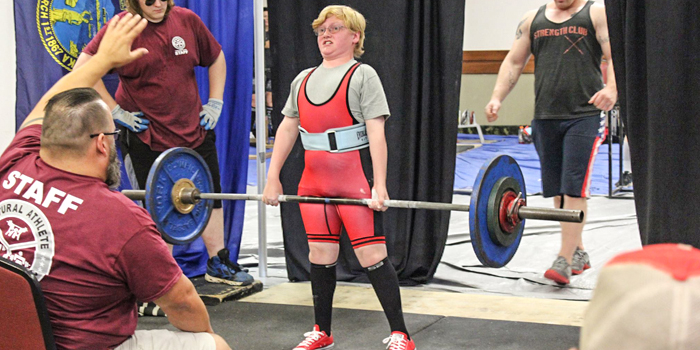
Every coach has done it. We have all had those nerves and dealt with the anxiety of coaching at our first meet. Hell, the meet isn't even the hard part — it's getting set up for it and preparing how you're going to do the attempts for your lifters. Are you going to have them try to break records? What's the warm-up room going to be like? Even if you've competed before, coaching your first meet is hell on your nerves. I've been in this game for a while. I'm a guy who learns from his mistakes, and man, I've done a ton of learning. I never had anyone to tell me what I didn't know, so I walked into my first meet as a coach with 12 lifters and my blood pressure still gets up thinking about it.
RECENT: The Swing Block Method
I'm going to give you what I wish I always had: a damn good guide for beginning coaches for their first meet. If you don't have a mentor or somebody to help guide you, this is perfect for you. Also, if you do not have anyone to help you, contact me. I want nothing more in life than to help other coaches succeed. As for who I am and why you should care about what I'm telling you: In 2017 alone, I've coached powerlifters to 170 national and state records using The Swing Block Method, which is another big reason why my lifters are setting so many records, and I've never been at a meet where I have coached any fewer than 10 lifters at a time.
Finding a Meet
First you're going to need to find a meet, obviously. Find what your local federations are and when they come around. Give yourself at least a month to mentally prepare yourself and your lifters. Make sure to read their rules. While they are all basically the same, there will be differences. Some federations make you keep your feet flat in the bench, some you have to qualify to compete in the meet, some don't consider knee wraps to be raw, etc. There are differences. Make sure you know them.
There are a ton of federations out there. Some small, some more recognized. Here's the thing: it doesn't freaking matter which one you lift with, as long as you're comfortable there. The point is to lift and have fun. Screw everything else. When you know your federation, look them up on Facebook. More often than not, they will have Facebook groups for not only the federation as a whole but also the region you're a part of. Join these groups and learn all you can.
You have the federation picked out and you have a meet date. Awesome. This is where the work starts. Now you have to get your lifters on board to compete. I'm not going to go into that part, because I'm assuming if you're reading this that you already have them. So get a scale, weigh your lifters, get their age, and write it all down.
Selecting Attempts
Now you need their opening lifts. All of this is important in this order so you can set yourself up with the best plan of attack. At my gym, we always know what our openers are because we follow The Swing Block Method. Because of that, we test openers often, so at any moment we could register for a competition the next day and know what our lifts are going to be.
Here's how we pick our openers and following lifts. This isn't the way everyone does it, but it's how we do it. It works really well — well enough that my gym members have set 179 national and state records this year alone using this method. First we get what their three-rep max is on all their lifts. If you're following The Swing Block Method, you already know yours. We use the three-rep max as an opener because, even if they are having a bad day, they can get this weight for a single. The first lift should always be something you know the lifter can get, because the worst thing they could do is miss all of their lifts and bomb out. For the second lift, we are looking for a small PR of five pounds or less. We want them to walk away hitting a new personal best. With the adrenaline and the nose torque, this shouldn't be a problem.
The third lift can be tricky. With my members, we almost always shoot to break a record. It could be a state record or it could be a national record. Doesn't matter, we're breaking one. Now, assuming your lifters aren't following The Swing Block Method, they may not be constant record hunters. So here is another option. After each lift, ask them, "On a scale of one to 10, how hard was that lift?” With this information, you'll know how much they struggled, even if they didn't show you, and now you'll have the information to pick the next lift. Often my members don't want to know what's on the bar. They trust me to make the call and they just want to lift and know the weight after. For them, it's a mentality of, “I'm going to lift that damn weight no matter what." Your lifters may want to pick the last weight. Either method is fine.
Now we know their weight, their age, and have an idea of what their attempts are going to be. At this point, you need to go to the federation website and decide how you want to register them. Most federations have many categories in each weight division. For an example, you can have a 90-kilogram/198-pound class that has an open, pure, equipped, youth, teen, high school, push-pull, bench press only, and multiple submasters and masters levels. That's pretty common. So what you need to do is look at their weight class, then the age, which will dictate what categories are open to them. From there you want to pick the option that gives them the greatest chance of breaking that record. We often will place our lifters in more than one so they can break multiple records at once. We may sign a lifter up for the open, push-pull, and bench press only if they can break the records. If they can, you're looking at six records right there, and even more if they break national records as well. Now, open records are always the best to break. Go for those as often as possible, but find a record they can break and crush the damn thing.
One important part here is that, while this gives you a great way to figure out your lifts, still ask your athletes what they want to hit for themselves. If one of them has a specific number he's been chasing, you should consider modifying this to fit their needs.
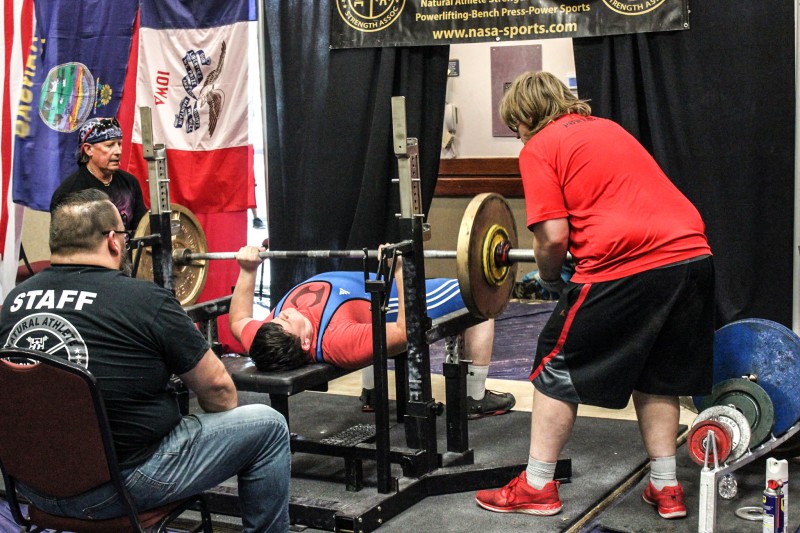
Staying Organized
At this point, you have all their information for the meet. Now you need to create a spreadsheet to make your life easier for the day of the meet. This spreadsheet needs to have their name, weight class, and attempts. Beside each attempt, leave a box to mark if they made the lift. At the end of the sheet, put the state and national records with a checkbox beside them so you can see how close they are and if they break it or not. If you're taking youth lifters, put the numbers in both kilograms and pounds so you can make copies for the parents to follow along while they watch. Parents love that shit and it shows you're thinking about them. Admittedly, I suck at spreadsheets. I freaking hate them. Contact me and I'll hook you up with a template to make your life a ton easier.
RELATED: The Gift of Perspective: Things to Know as a New Powerlifter
Next is figuring out the warm-ups. Every coach does this differently, so I'm not going to get into that. Just do a search here on elitefts and you'll find lots of great advice about that. Before you get to the meet, there are a few universal rules that your lifters need to know. Things they need to bring to the meet include a singlet, socks that come to their knees but not over, wrist wraps, knee wraps unless you supply the wraps, a cotton shirt to wear under the singlet for the bench and squat, a phone charger, food, and snacks. They really need the food, snacks, and phone charger. It's not uncommon to be at a powerlifting meet for 10 hours or more. Wrapping the knees and wrist wraps is a technique in itself.
I've had a ton of lifters, people I've met at meets, and other coaches mention how they were intimidated by their first meet — not coaching it, but the people there. When you're going into your first meet you almost have to expect the back room filled with a bunch of intimidating assholes. It can be intimidating to think about but the truth of the matter is that everyone in the back room is always extremely nice and helpful. Nobody is ever a dick or rude, and they always want to help where they can. The only instance I've had where somebody wasn't perfectly nice was a guy who had already got himself into what Dave Tate calls The Void. It wasn't his fault; he was mentally prepared to make the lift of his life and somebody tried talking to him. When you see a lifter looking like they are in another place in their head, give that gentleman some space like you would like to have. The point is, don't be intimidated by the warm-up room. These are the nicest and happiest people you'll ever meet. They're just happy to be lifting with you.
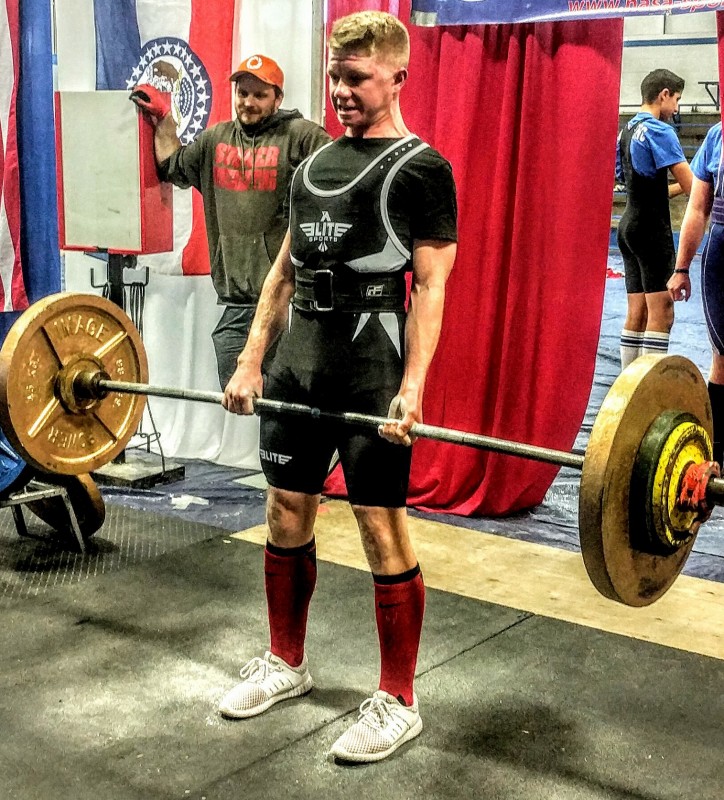
Meet Day
Now it's the day of the meet. If you were smart you've told your lifters to bring lots of food, snacks, and their phone chargers, because this is going to last a while. I always have my lifters get there 30 minutes before weigh-ins. I gather them up and have them fill their registration cards out together. This way everyone has an opportunity to ask questions and I have my clipboard with the spreadsheets on it so all of their information is there and easily accessible. Somebody is going to forget their openers, somebody won't know what division to enter, and someone will need your knowledge to get everything filled out.
Once you get the cards filled out, take them to whoever is doing the registration. The athletes will pay, register, and get weighed in. Now you have a few minutes to relax and wait for the rules meeting. In the rules meeting, don't be afraid to ask questions. Seriously, this is the time to clarify everything. If you have a question and you don't ask, you just did a disservice to your athlete. After the rules meeting, you need to go find the heat lists. This is normally posted in the warm-up room. Each lift will have different heats in which the lifters compete. This is going to let you know when your lifters compete, how long they have until they lift, and if you get an opportunity to sit down or not.
Okay, now warm-ups are going on and your first lifter is about to go. After each lift, look at the flags or lights from the judges, and if your lifter's attempt gets flagged, ask the judge why. I've never had a judge have an issue with letting me know what they had seen that I didn't. Now ask your lifter, “On a scale of one to 10, how difficult was that lift?” Even if you already know it was easy, you need to understand what was happening in the mind and body of your athlete as they made that lift. This is really valuable information to have. Next, you have to go to the table and let the event director know what the next lift is going to be. Repeat this process for all of your lifters for all the heats.
After the Meet
Once the lifting is over, don't run off yet. After the meet, there will be an awards ceremony that you want to stay for. Before the awards ceremony begins, you're going to want to clean your stuff up, get your gear to your car, and make sure you don't leave any trash out. I make it a habit to very loudly tell my team to pick up all their trash so that the other lifters hear it as well and pick theirs up. It's not uncommon for me to call out other coaches and teams for leaving trash behind that the meet volunteers have to pick up. Seriously, don't be that guy who leaves trash. The people at the meet work hard to put on the event, so don't be the asshole who makes them have to work harder.
That's it. This is as straightforward as I can make it for you. It's also a lot of information that I had to figure out on my own because I didn't have anyone to guide me. If you're a coach and you don't have a mentor, feel free to ask me any questions, I'm always happy to help out.
Images courtesy of Barton County Strength Club
Jeremy Augusta is the owner of Barton County Strength Club which is known for their extremely successful competitive strength team. Jeremy is a USAW L2 coach with 15 years fitness experience with background in MMA, powerlifting, Olympic Weightlifting, and bodybuilding, all which come together in his programming.









